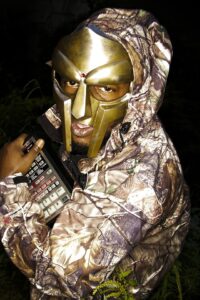 Interview with the author S.H. Fernando Jr. on the Genius of MF DOOM
Interview with the author S.H. Fernando Jr. on the Genius of MF DOOM
Paperback now available – The Chronicles of DOOM: Unraveling Rap’s Masked Iconoclast (Astra House Books, Fall 2024)
Few artists in hip-hop history have cultivated mystery and mastery like MF DOOM, the masked supervillain whose rhymes warped timelines, rewired punchlines, and redefined independent artistry. His passing in 2020 left fans grieving yet mystified — still decoding the layers of his art, humor, and myth.
I chatted with S.H. Fernando Jr., better known as SKIZ, to explore those hidden layers. SKIZ is a journalist, cultural historian, and author of the groundbreaking new biography The Chronicles of DOOM: Unraveling Rap’s Masked Iconoclast. The book is a deep dive into the life, music, and myth-making of Daniel Dumile, revealing how DOOM’s creative philosophy reshaped hip-hop’s relationship with fame, authorship, and performance. Below is our full conversation — unedited — offering a rare glimpse into how one of rap’s most enigmatic figures turned anonymity into artistry.
 Decoding the Villain
Decoding the Villain
David: Your subtitle promises to “unravel” a figure who deliberately stayed tangled. What did you find most surprising about how Daniel Dumile built and protected the MF DOOM persona—artistically and strategically?
SKIZ: In an era when everyone (not only celebrities) share the minutiae of their lives on social media, DOOM went in the opposite direction, creating and maintaining a mystique which made people come to him. I believe it was partly a reaction to having an experience with fame early in life, before graduating high school, that left a bad taste in his mouth. When he plotted his return as DOOM, the whole point of the mask was to keep a divide between his public and private persona which would allow himself to preserve some kind of private life. He also wanted people to focus on his art and not the person who was creating it, which jives with his low-key personality and being somewhat of a loner and introvert. Later on, as his fame grew, this became a kind of credo: Everything is on a need-to-know basis. He operated this way to protect his privacy and create a mystique, but it proved just as successful in selling records as the usual hype and promotion. What surprised me is that an artist would go to such lengths and be so strategic about managing his fame by always controlling the narrative. And he did it largely without the benefit of social media, which every other artist heavily relied on.
Comedy as Blade & Shield
David: From skits to punchlines, DOOM’s humor cuts deep. What role did comedy play in his storytelling—was it misdirection, critique, or armor? Where do you see the joke carrying the heaviest meaning?
SKIZ: I would argue that DOOM’s whole lane in hip-hop is comedy. Even the way he constructed his raps could literally be taken as strings of one-liners with punchlines that kept the audience rolling, unable to catch their breath until the next joke registered. He even admitted as much in interviews, saying that approaching a song was almost like putting together a comedy routine. As someone who has really studied his lyrics and taken apart his rhyme schemes this is the one constant I see in his work. I think by nature, Daniel was a sarcastic, mischievous fellow who didn’t take many things seriously and this was how he saw the world and wrote. On a deeper level, you could view humor as a weapon because while most MCs defaulted to aggression or insults, DOOM employed humor to dominate. You could even view the whole DOOMbot controversy as him trying to push the limits of humor as far as he could take it by having a laugh at the expense of the entire audience.
 Masks, Myth, and Control
Masks, Myth, and Control
David: How did the mask—and the mythology around it—let DOOM control labor, authorship, and public expectation? Do you read the “DOOMposter” / DOOM Bot, era as prank, protest, or performance art about celebrity itself?
SKIZ: Initially, the mask offered Daniel Dumile anonymity, allowing him to create space between his private and public personas. That space, in turn, made it possible for him to create multiple characters as an author would, instead of being limited to writing from a single perspective. Daniel eventu ally discovered that there were other advantages to his split-personality approach. For example, if a label was not offering the kind of money he wanted, he could offer them a King Geedorah album instead of DOOM album. He could also say things he might not say as Daniel Dumile and be as evil as he wanted to be as the “Supervillain” because he could always claim that that was not him. So, the mask really helped him control and manage such elements as authorship, public perceptions, and even defining who he was as an artist. Personally, I see the who DOOMbot issue as performance art where DOOM was seeing how far he could push things. It came at a time when the mask had taken on an identity of its own and his illness was preventing him from performing at some shows, so he decided to let someone else wear the mask and essentially play his character. Also, the way he justified the con was ingenious, saying that in Batman movies, different actors played the lead role, so why couldn’t he do the same thing. At the end of the day, that’s also how he distinguished himself from all the other MCs because he claimed to be an author and not the character.
Sample Alchemy
David: Cartoons, dusty loops, and B-movie fragments became narrative glue in DOOM’s world. What did your research reveal about his (and his collaborators’) sample sensibilities—what made a sound DOOM-worthy?
SKIZ: Growing up under the original hip-hop culture, DOOM knew that biting other peoples’ style was strictly off limits, so he really went to great lengths to be original both as an MC and producer. Therefore, many of his sample choices demonstrate a desire to tap into sources others had not. Cartoons—especially the Hanna Barbera and Marvel animations—were stuff that he gravitated to anyway, so it only made sense for him to mine them for both vocal and sonic samples. To me, this is the lane he really created for himself in hip-hop. Just as Wu-Tang is associated with kung-fu films, DOOM will forever be associated with cartoons and humor because that was who he was. But he never gets corny with it and always samples something with a more dramatic or suspenseful sound. DOOM also had no rules when it came to sampling. For example, all the cheesy 80s R&B that he sampled, no other producer at the time would touch, but he was able to find something in it that worked. That takes a real ear.
The Man vs. The Manuscript
David: As a journalist and cultural historian, how did you navigate the gap between the myth fans want and the complexity you uncovered? What tension did you choose to leave unresolved—and why?
SKIZ: Let me first say that this was a very challenging book to write being that DOOM was a very private person who didn’t reveal much about himself. Since his closest friends and inner circle respected his privacy, they didn’t reveal much about the man either. So, in a way, I was forced to focus on the music. I was lucky, however, to find out a lot about his missing years when he kind of fell off the radar and was in the process of developing this new character, whom we have all come to love. But centering on the music was not necessarily a bad thing, because I wanted to show that DOOM was a true artist in every respect and in that way, distinguished himself from a lot of other MCs, who are out here for the money and fame. At a time when the artform had lost some of its original appeal and become more mainstream, DOOM chose to align himself with the original ideals of hip-hop—creativity, originality and innovation—and in this way was able to have such a huge impact, even though he was not on a major label and didn’t sell tons of records. I think it’s important for people to realize that one does not have to “sell out” to have an impact. One thing I wanted to find out more about while researching the book was DOOM’s interest in the occult (i.e. “hidden knowledge”), but that would obviously be impossible without talking to the man directly, so that is one aspect of DOOM that I had to leave unresolved. But I hope I still left the impression amongst readers that this was an important area of study for him and one in which he was constantly expanding. Perhaps if his wife or other member of his inner circle writes about DOOM, we might get a little more clarification on this part of his life.
Bottom Line | On The Chronicles of DOOM
After speaking with SKIZ and reading his book, it’s clear that The Chronicles of DOOM is more than just a biography — it’s a rare exploration of how this artist built one of the most mysterious identities in hip-hop. SKIZ does a great job balancing the myth of MF DOOM with the real person behind the mask. He doesn’t chase gossip or internet rumors; instead, he focuses on how Daniel Dumile created his sound, controlled his image, and shaped a new kind of independent artistry. The book takes us through DOOM’s early years with KMD, the personal losses that shaped him, and the creative rebirth that made him a legend.
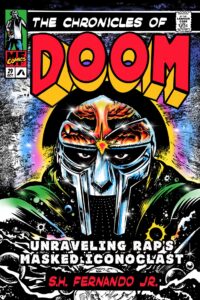
What stands out most is how SKIZ keeps the story grounded in the music. He digs into DOOM’s writing, sampling, and humor in a way that helps readers understand how carefully he built his universe. The book also shows why DOOM’s approach — protecting his privacy while still being fully creative — feels even more relevant today. It’s not just a history lesson; it’s an artist’s guide to staying true to your craft in a world that constantly demands more access. Doom was not only a hip-hop artist he was one of the greatest lyricists of all time, and he was a world builder.
Fernando’s Chronicles of DOOM is more than biography — it’s a master key to Doom’s ciphers. By tracing the transformation from Zev Love X to the metal-faced villain, the book illuminates how Dumile’s craft and cunning forged a blueprint for independent artistry that still reverberates through hip-hop culture today. Like DOOM himself, the story is full of contradiction: anonymity and authenticity, villainy and virtue, comic absurdity and truth. This rare conversation with SKIZ reminds us that DOOM’s genius wasn’t only in what he said — but in what he refused to reveal.
For anyone who loves hip-hop history, lyricism, or the creative process, this is a must-read. The Chronicles of DOOM reminds us that mystery can still be powerful — and that sometimes the most authentic voice is the one behind the mask.
📘 Get the Book
The Chronicles of DOOM: Unraveling Rap’s Masked Iconoclast
Author: S.H. Fernando Jr. (aka SKIZ)
Publisher: Astra House Books
Release: Fall 2024 — Paperback available now (October 28, 2025)
Buy or Learn More →

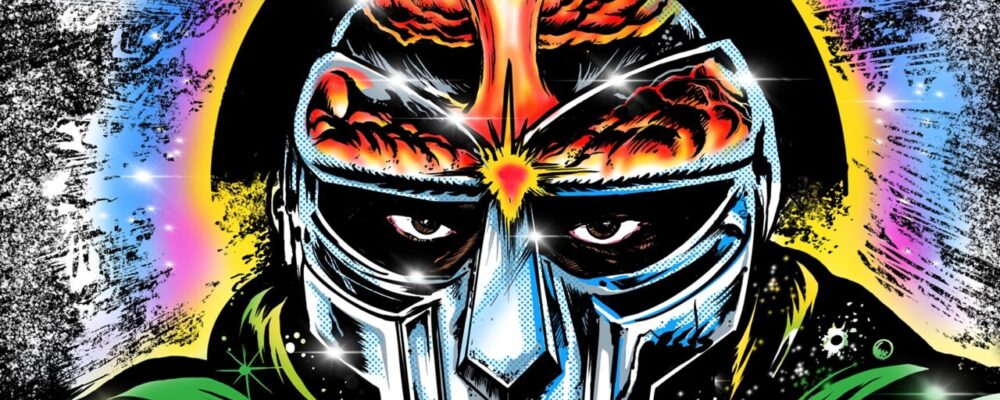
 Interview with the author S.H. Fernando Jr. on the Genius of MF DOOM
Interview with the author S.H. Fernando Jr. on the Genius of MF DOOM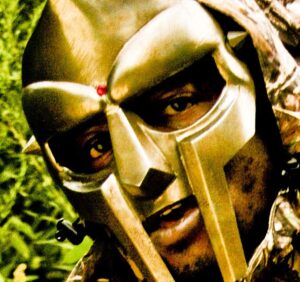 Decoding the Villain
Decoding the Villain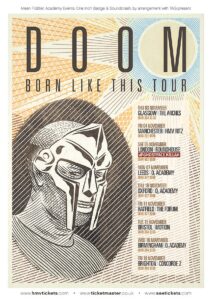 Masks, Myth, and Control
Masks, Myth, and Control